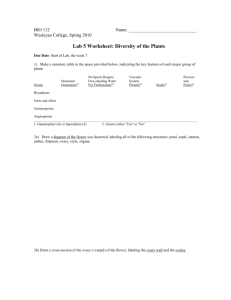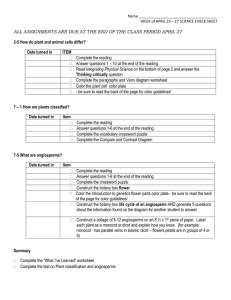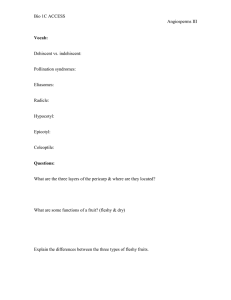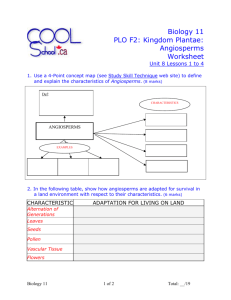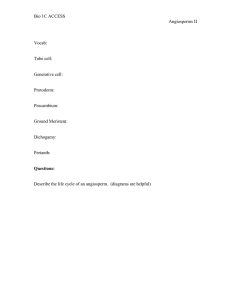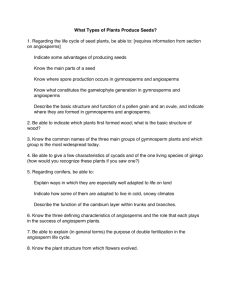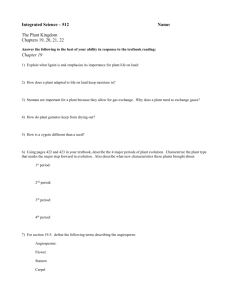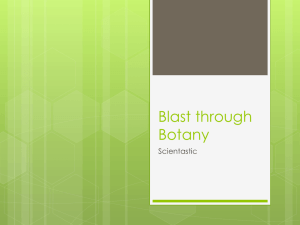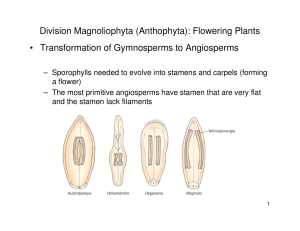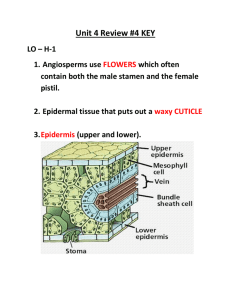Access Study Guide 6
advertisement
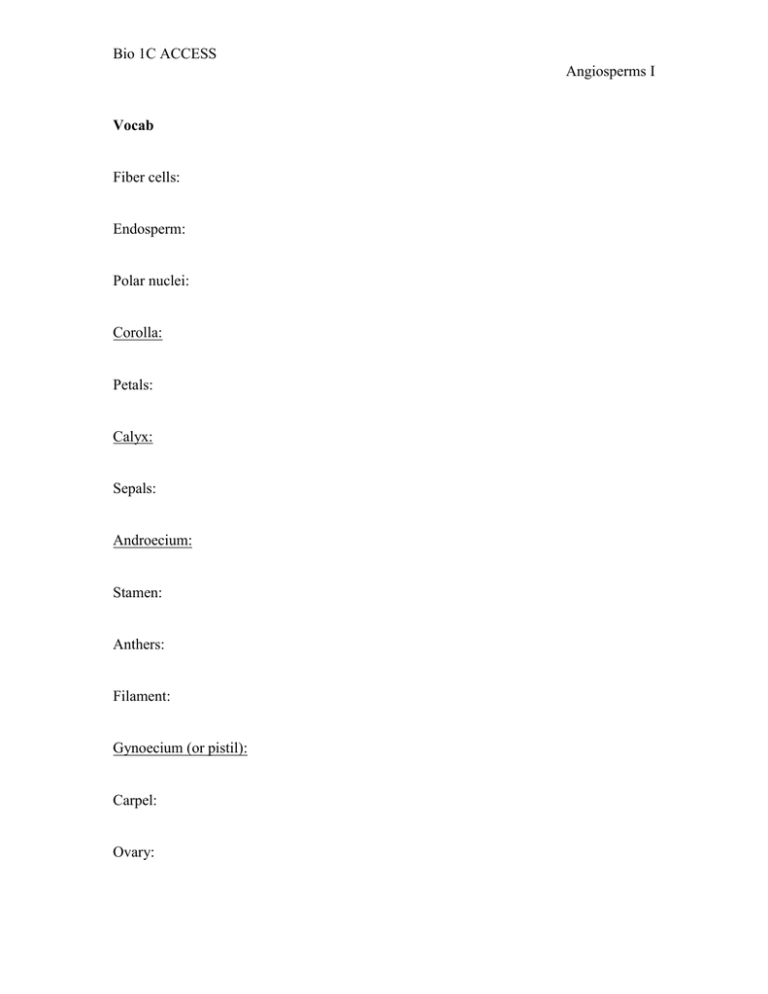
Bio 1C ACCESS Angiosperms I Vocab Fiber cells: Endosperm: Polar nuclei: Corolla: Petals: Calyx: Sepals: Androecium: Stamen: Anthers: Filament: Gynoecium (or pistil): Carpel: Ovary: Bio 1C ACCESS Angiosperms I Ovule: Stigma: Style: Pericarp (and the three parts): Locule: Receptacle: Cotyledons: Inflorescence: Peduncle: Pedicel: Radial vs. Bilateral symmetry: Questions List some reasons why coevolution between plants and animals is very important. What are the three most important new adaptations to land found in the seed plants? What are some of the traits of the angiosperms? Bio 1C ACCESS Angiosperms I Why is it that plant roots need available oxygen? What three cell types are found in the xylem tissue of angiosperms? Below are two x-sections of a root. Which is the monocot and which is the eudicot? Below are two x-sections of a stem. You know what to do… Bio 1C ACCESS Angiosperms I Describe the process of double fertilization, and explain why it is successful. What is the ploidy number of the endosperm? Why is this? How can you tell the difference between a monocot and a eudicot? What is an advantage of having brightly colored petals? Diagram, and label the organs, of a complete, perfect flower. Bio 1C ACCESS Angiosperms I Describe the difference between a complete vs. an incomplete flower. Describe the difference between a perfect vs. an imperfect flower. (And what is the difference between a monoecious vs. a dioecious plant?) Diagram and explain the difference between a superior (hypogynous) ovary, and an inferior (epigynous) ovary. Explain how a sunflower is made up of many smaller flowers, and name this inflorescence.
